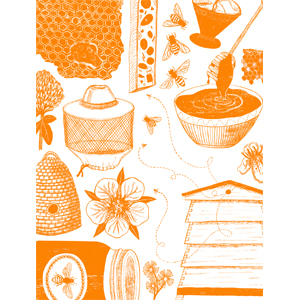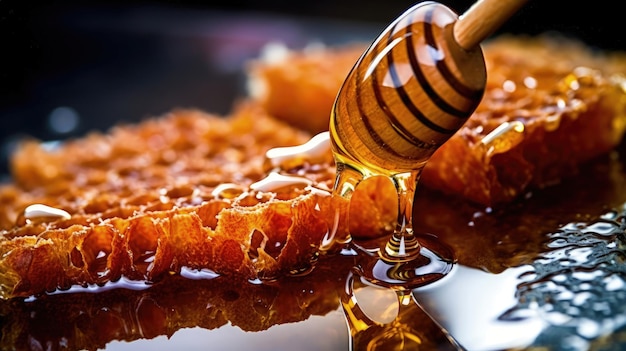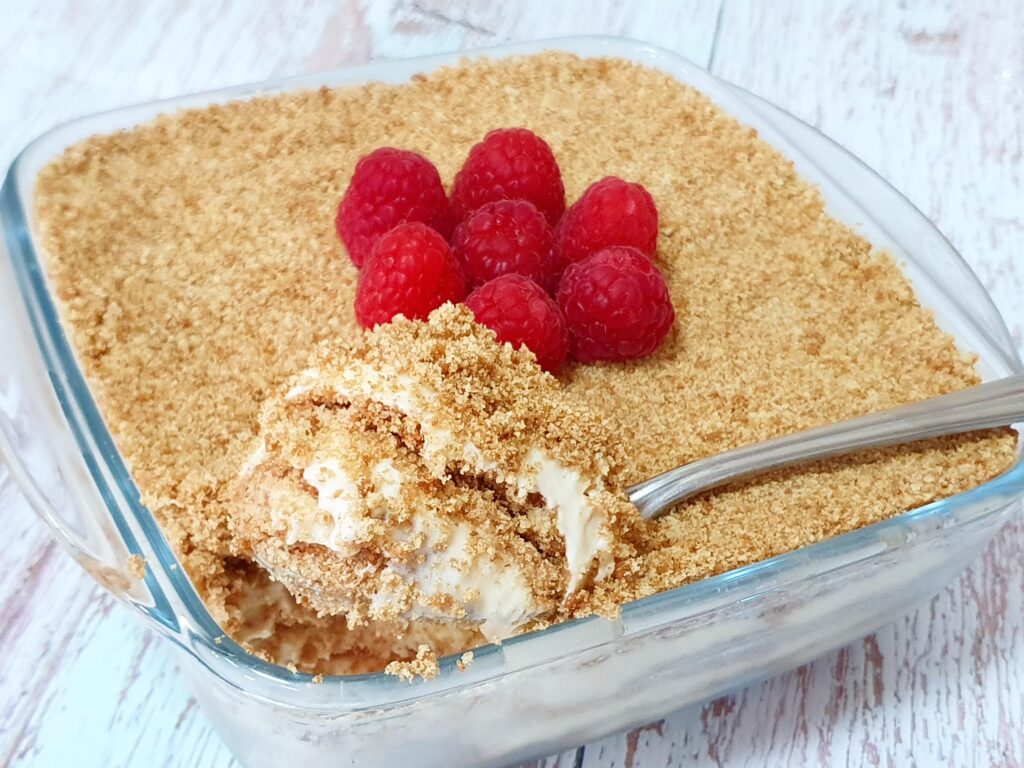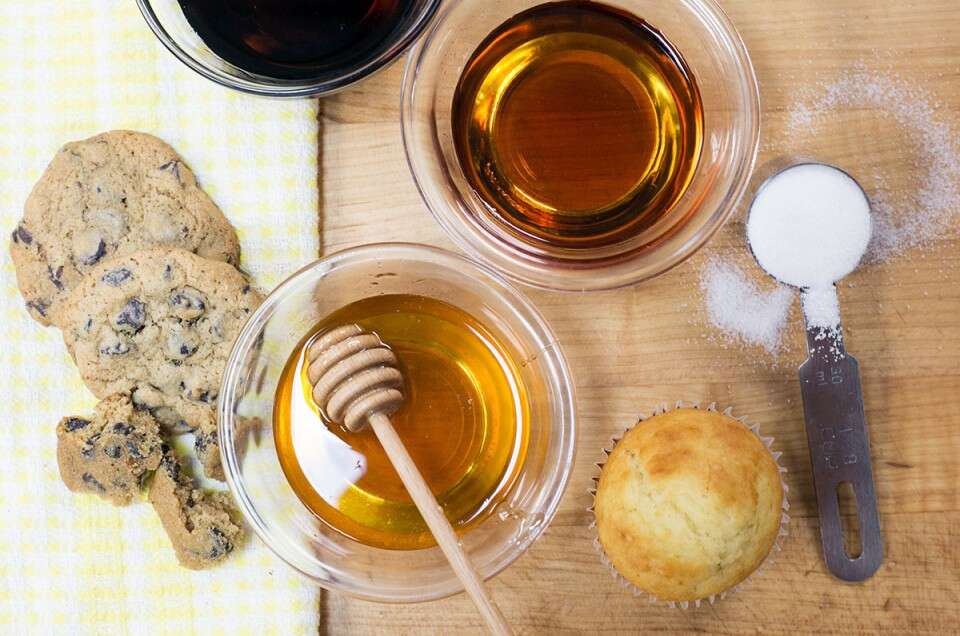
Get ready to add a sweet touch to your culinary creations as we delve into the marvelous world of cooking with honey. From delectable desserts to savory dishes with a hint of sweetness, honey brings a whole new dimension to your kitchen. Discover the countless wonders of incorporating this golden nectar into your recipes and unlock a whole new realm of flavors that will leave your taste buds longing for more. So grab your apron, heat up your stove, and let honey take center stage in your next culinary adventure.
Health Benefits of Honey
Honey is not only a delicious addition to your meals and treats, but it also offers a range of health benefits. From antioxidants to immunity-boosting properties, here are some of the reasons why incorporating honey into your diet can be beneficial for your overall well-being.
Antioxidant Power
One of the standout health benefits of honey is its antioxidant power. Antioxidants help to protect our bodies from free radicals, which are unstable molecules that can cause damage to our cells. Honey contains various types of antioxidants, including phenols and flavonoids, which can help reduce inflammation and lower the risk of chronic diseases like heart disease and certain types of cancer.
Anti-bacterial Properties
Honey has been used since ancient times for its antibacterial properties. It contains natural hydrogen peroxide, which makes it an effective natural remedy for treating wounds and preventing infections. The low water content and acidic pH of honey create an environment that inhibits the growth of bacteria. So, the next time you have a minor cut or scrape, consider applying some honey to speed up the healing process.
Soothing Sore Throats
When you have a sore throat, a warm cup of honey and lemon water can provide relief. Honey has natural soothing properties that can help calm the inflammation and irritation in your throat. Its thick consistency also forms a protective layer over the throat, providing temporary relief from the discomfort. Plus, the antibacterial properties of honey can help fight off any infection causing the sore throat.
Boosting Immunity
Honey contains several compounds that can help boost your immune system. The antioxidants present in honey can help strengthen the immune system and protect against common illnesses like colds and flu. Additionally, honey has natural antimicrobial properties that can help fight off harmful bacteria and viruses. Incorporating honey into your diet can provide a natural boost to your immune system, keeping you healthier and more resilient.
Enhancing Flavor and Texture
Not only does honey offer a wealth of health benefits, but it also enhances the flavor and texture of your dishes. Here are a few reasons why honey is a versatile and valuable ingredient in culinary creations.
Natural Sweetener
Honey is a natural and healthier alternative to refined sugar. Its distinct flavor profile adds depth and complexity to both sweet and savory dishes. Unlike sugar, which simply adds sweetness, honey also imparts its unique taste, ranging from floral and fruity to earthy and robust. Whether you’re sweetening your morning coffee or adding a touch of sweetness to a sauce or marinade, honey can elevate the overall taste experience.
Versatile Ingredient
From appetizers to desserts, honey can be used in a wide variety of dishes. Its versatility shines through in both sweet and savory recipes. Use it in marinades, dressings, glazes, and sauces to add depth and complexity to your meals. Incorporate honey into baked goods, such as bread and pastries, for a slightly caramelized and moist texture. The possibilities are endless when it comes to cooking with honey.
Creating Balance in Dishes
Honey has a unique ability to balance flavors in a dish. Its natural sweetness can counterbalance the acidity of citrus or vinegar-based dressings and marinades. It also adds a touch of warmth and richness to savory dishes, taking them to a whole new level of deliciousness. Experiment with different flavor combinations and let honey be the secret ingredient that brings harmony to your culinary creations.
Substituting Sugar with Honey
If you’re looking for a healthier alternative to sugar, honey can be a fantastic substitute. Its natural sweetness means you can use less honey than sugar to achieve the same level of sweetness. When substituting honey for sugar, use about ¾ cup of honey for every cup of sugar, and reduce the liquid in the recipe by about ¼ cup. Keep in mind that honey has a higher moisture content, which can affect the texture and browning of baked goods. Adjusting the recipe accordingly will help you achieve the desired results.

This image is property of Amazon.com.
Exploring Different Varieties
Honey comes in a variety of flavors and textures, each with its own unique characteristics. Here are some different varieties of honey you can explore and savor:
Floral Honey
Floral honey comes from the nectar of various flowers, offering a delicate and nuanced flavor profile. It can range from light and fruity to robust and woody, depending on the flowers visited by the bees. Some popular floral honey varieties include lavender honey, orange blossom honey, and acacia honey. Floral honey is perfect for drizzling over desserts, adding a touch of sweetness, and enhancing the floral notes of your creations.
Wildflower Honey
Wildflower honey is produced by bees that collect nectar from a variety of wildflowers, giving it a unique and complex flavor profile. It has a rich, full-bodied taste with subtle earthy undertones. Wildflower honey is versatile and can be used in both sweet and savory dishes. It pairs well with cheeses, fruits, and even roasted vegetables, adding a touch of natural sweetness.
Clover Honey
Clover honey is one of the most common and widely available types of honey. It has a mild and sweet taste, making it a popular choice for everyday use. Clover honey is typically light in color and has a smooth texture. It works well as a natural sweetener in baked goods, hot beverages, and dressings. Its delicate flavor doesn’t overpower other ingredients, allowing them to shine in your recipes.
Manuka Honey
Manuka honey is a unique type of honey that comes from New Zealand. It is produced by bees that pollinate the Manuka bush, giving it distinct medicinal properties. Manuka honey has a rich, robust flavor with a slightly bitter aftertaste. It is known for its antibacterial and healing properties, making it a popular choice for natural remedies and skincare products. Enjoy a spoonful of Manuka honey on its own or incorporate it into your favorite recipes for an extra boost of goodness.
Cooking with Honey: Tips and Techniques
When it comes to cooking with honey, a few essential tips and techniques can help you make the most of this versatile ingredient. Here are some pointers to keep in mind:
Measuring and Converting
When using honey in your recipes, it’s important to measure it accurately. Use a liquid measuring cup and lightly coat it with non-stick cooking spray before pouring in the honey. This will make it easier to pour out and will prevent the honey from sticking to the cup. If a recipe calls for a specific volume of honey but you prefer to use a different type or flavor, you can generally substitute one type of honey for another without major changes to the recipe.
Cooking Temperatures and Recipe Adaptation
Honey can be sensitive to heat, so it’s important to consider cooking temperatures when incorporating it into your dishes. Heat can cause honey to lose its nutritional benefits and affect its flavor. When baking, reduce the oven temperature by about 25°F (or follow the recipe’s instructions) to prevent honey from burning or becoming too dark. Additionally, if you’re adapting a recipe that calls for granulated sugar, remember that honey is sweeter than sugar, so you’ll need to adjust the amounts accordingly.
Combining with Other Ingredients
Honey is versatile and can be combined with a variety of ingredients to create unique and delicious flavors. Experiment with different combinations to find your favorite pairings. For savory dishes, try combining honey with garlic, soy sauce, or mustard for a flavorful marinade or glaze. In sweet recipes, consider pairing honey with cinnamon, vanilla, or citrus zest for an added depth of flavor. The possibilities are endless when it comes to creating exciting flavor profiles with honey.
Caramelizing and Glazing Techniques
Honey lends itself well to caramelization and glazing techniques, adding a beautiful shine and depth of flavor to your dishes. To caramelize honey, heat it gently over low to medium heat until it turns golden brown and develops a rich aroma. Be sure to watch it closely and stir frequently to prevent it from burning. Glazing with honey involves coating your ingredients with a mixture of honey and other flavorful ingredients, then baking or broiling until the glaze is caramelized, sticky, and delicious.

This image is property of Amazon.com.
Incorporating Honey into Savory Dishes
Honey is not just for sweet treats. It can also be a wonderful addition to a variety of savory dishes. Here are a few ideas for incorporating honey into your savory creations:
Honey-Glazed Salmon
Honey adds a touch of sweetness and caramelization to salmon, enhancing its natural flavors. Prepare a simple glaze with honey, soy sauce, lime juice, and garlic. Brush the glaze over the salmon fillets and bake or grill until the fish is cooked through and the glaze is caramelized. This dish is not only delicious but also packed with omega-3 fatty acids and antioxidants.
Honey-Glazed Chicken
For a flavorful twist on classic roasted chicken, try a honey glaze. Combine honey, Dijon mustard, and your favorite herbs and spices. Rub the glaze all over the chicken and roast it until golden and cooked through. The honey glaze will create a deliciously sticky and slightly sweet coating on the chicken, making it a hit with both kids and adults alike.
Honey-Glazed Vegetables
Honey can also bring out the natural sweetness of roasted vegetables. Toss carrots, sweet potatoes, or Brussels sprouts with a mixture of honey, olive oil, and your favorite herbs and spices. Roast the vegetables until tender and caramelized, and drizzle with a bit of additional honey before serving. The result is a vibrant and flavorful side dish that will have everyone reaching for seconds.
Honey and Cheese Pairings
The combination of honey and cheese is a match made in culinary heaven. The sweetness of honey complements the salty and savory flavors of cheese, creating a delicious contrast. Experiment with different combinations such as drizzling honey over a creamy brie or camembert, pairing honeycomb with aged cheddar or gouda, or using honey to sweeten a tangy goat cheese spread. Serve these delightful pairings with crackers, bread, or fruit for a delightful appetizer or dessert.
Indulging in Sweet Treats with Honey
If you have a sweet tooth, honey can be your secret ingredient in creating a wide range of delightful treats. Here are some delectable sweet recipes you can make with honey:
Honey Baked Goods
Honey adds a natural sweetness and moist texture to baked goods. From cookies and cakes to bread and muffins, there are countless recipes that can benefit from the addition of honey. Replace some or all of the sugar with honey in your favorite baked goods and enjoy the enhanced flavors and irresistible aromas.
Honey Dessert Sauces
Drizzling a homemade honey dessert sauce over your favorite desserts takes them to a whole new level. Create a simple honey syrup by combining honey with water and gently heating it until the mixture thickens. You can infuse the syrup with additional flavors like vanilla, cinnamon, or citrus zest to suit your taste. Pour it over ice cream, pancakes, waffles, or fruit for a sweet and luscious treat.
Honey Ice Cream
Homemade ice cream is a delightful treat, and when you sweeten it with honey, it becomes even more exceptional. Honey lends a unique flavor profile and a smooth texture to ice cream. Whether you’re making a classic vanilla or experimenting with more adventurous flavors like lavender or chai, incorporating honey will add a touch of natural sweetness that will keep you reaching for another scoop.
Honey-Sweetened Beverages
Honey can be a perfect sweetener for your beverages, providing a natural and delicious alternative to sugar. Add a spoonful of honey to your tea or coffee for a hint of sweetness and added flavor. Create refreshing and flavorful drinks by mixing honey with lemon or lime juice, or infusing it with herbs like mint or rosemary. Homemade honey lemonade or honey-infused iced tea are perfect beverages to enjoy on a hot summer day.

This image is property of img.freepik.com.
Adding Honey to Breakfast Delights
Breakfast is the most important meal of the day, and adding honey to your morning creations can make it even more enjoyable. Here are some delightful breakfast ideas that incorporate honey:
Honey Pancakes and Waffles
Start your day with a stack of fluffy pancakes or crispy waffles drizzled with honey. The natural sweetness of honey pairs perfectly with the comforting flavors of pancakes and waffles. You can also add a drizzle of honey directly into the batter for an extra boost of flavor. Top your pancakes or waffles with fresh fruit, nuts, or a dollop of yogurt for a balanced and satisfying breakfast.
Honey Yogurt Parfait
Yogurt parfaits are a fantastic way to enjoy a nutritious and indulgent breakfast. Layer Greek yogurt, your favorite fresh fruits, granola, and a drizzle of honey in a glass or bowl. The honey adds a touch of sweetness and ties all the flavors together. This versatile breakfast can be customized to your liking by using different fruits and toppings.
Honey Granola
Make your own granola at home and sweeten it with honey. Combine rolled oats, nuts, seeds, dried fruit, and a touch of honey with some melted butter or oil. Bake the mixture until golden brown and fragrant, stirring occasionally to ensure even browning. Homemade honey granola is not only delicious but also a healthier alternative to store-bought versions that may be packed with added sugars.
Honey Fruit Salad
Transform a simple fruit salad into a vibrant and scrumptious breakfast with the addition of honey. Toss together a variety of your favorite fresh fruits, such as strawberries, blueberries, pineapple, and melon. Drizzle honey over the fruit and gently toss to coat. Let the fruit salad sit for a few minutes to allow the flavors to meld together. Serve it as a refreshing side dish or enjoy it on its own for a light and energizing breakfast.
Honey in Traditional and International Cuisine
Honey plays a significant role in traditional and international cuisines, adding depth and complexity to a variety of dishes. Here are some examples of how honey is used in different culinary traditions:
Honey in Asian Cuisines
In Asian cuisines, honey is often used in savory dishes to balance flavors and add a touch of sweetness. In Chinese cuisine, honey-glazed dishes like char siu pork and honey chicken are popular for their unique flavors. Japanese cuisine utilizes honey in sauces and glazes for grilled meats and seafood, adding a glossy finish to the dishes. Korean cuisine incorporates honey into marinades, such as the famous honey-garlic chicken wings. The sweetness of honey complements the bold and umami flavors of Asian cooking.
Honey in Middle Eastern and Mediterranean Cuisines
Middle Eastern and Mediterranean cuisines have a long history of using honey in both sweet and savory dishes. Honey-soaked pastries like baklava and kunafa are staples of Middle Eastern desserts, showcasing the perfect balance between honey’s sweetness and the richness of nuts and spices. In Mediterranean cuisine, honey is often used in savory dishes like tagines, glazes for grilled meats, and dressings for salads. The combination of honey, olive oil, and tangy ingredients like lemon or vinegar creates a harmonious flavor profile.
Honey in South American Cuisines
South American cuisines also celebrate the versatility and unique flavors of honey. In Mexican cuisine, honey is used in traditional mole sauces, balancing the richness and spice of the dish. Chilean cuisine incorporates honey into baked goods like sopaipillas, a type of deep-fried bread, and alfajores, a sweet sandwich cookie filled with dulce de leche. Honey is also used in Brazilian cuisine, particularly in desserts like brigadeiros, a chocolate truffle, and bolo de mel, a traditional honey cake.
Honey in Traditional European Dishes
Honey has been used in European cooking for centuries, adding sweetness and depth of flavor to traditional dishes. In British cuisine, honey is a key component of recipes like honey-glazed ham and honey cake. Italian cuisine incorporates honey into desserts like panforte, a dense and spiced fruitcake, and almond-based nougat. French cuisine features honey in classic dishes like pain d’épices, a spiced honey loaf, and tartes aux fruits, where honey is used to glaze and enhance the flavors of fresh fruits.

This image is property of 1.bp.blogspot.com.
Honey-Based Remedies and DIY Beauty Treatments
Beyond its culinary uses, honey has long been valued for its medicinal properties and skin-care benefits. Here are some ways you can incorporate honey into your home remedies and beauty routines:
Honey for Home Remedies
Honey has natural antimicrobial properties that can help soothe sore throats, ease coughs, and calm minor burns and cuts. For a sore throat, mix a spoonful of honey with warm water and squeeze in some lemon juice. Gargle with the mixture to ease pain and reduce inflammation. Honey can also be used as a natural cough suppressant by spooning a small amount directly into your mouth or mixing it with warm herbal tea. Applied topically, honey acts as a natural wound healer due to its antimicrobial and wound-repairing properties.
Honey Face Masks and Scrubs
Honey is a natural humectant, meaning it helps retain moisture in the skin. This makes it an ideal ingredient for face masks and scrubs. Create a simple honey face mask by mixing honey with ingredients like yogurt, oatmeal, or aloe vera gel. Apply the mask to clean skin, leave it on for 15-20 minutes, then rinse off for a hydrated and glowing complexion. To exfoliate and remove dead skin cells, mix honey with brown sugar or coffee grounds to create a gentle scrub for the face or body.
Honey Hair Treatments
Honey can work wonders for your hair, providing moisture, shine, and nourishment. Create a hair mask by mixing honey with natural ingredients like coconut oil, olive oil, or avocado. Apply the mixture to damp hair, focusing on the ends, and leave it on for 30 minutes to an hour. Rinse thoroughly and shampoo and condition as usual. Your hair will feel softer, healthier, and more manageable.
Honey in Natural Skincare Products
The beauty industry recognizes the many benefits of honey and incorporates it into various skincare products. Look for natural skincare products that contain honey as a key ingredient, such as cleansers, moisturizers, and lip balms. Honey’s antibacterial properties make it effective for treating acne and preventing breakouts. Its moisturizing and soothing properties can help calm sensitive or dry skin. By choosing honey-based skincare products, you can harness the power of honey to enhance your beauty routine.
Sourcing and Storing Honey
When it comes to sourcing and storing honey, there are a few things to keep in mind to ensure that you get the best quality and preserve its flavors properly:
Choosing Quality Honey
When purchasing honey, opt for high-quality, pure honey that has not been heavily processed or mixed with other sweeteners. Look for honey that is labeled as raw or unfiltered, as this means it has not undergone extensive processing that can strip away its natural properties and flavors. Locally sourced and artisan honey can offer unique flavors and support local beekeepers.
Proper Storage Tips
To preserve the taste and freshness of honey, it’s important to store it properly. Keep honey in a cool, dry place away from direct sunlight. Exposure to heat and light can cause honey to lose its flavor and nutritional properties. Store honey in a tightly sealed container to prevent moisture absorption and to keep out any potential contaminants.
Raw Honey vs. Processed Honey
Raw honey is honey that has not been heated or filtered, preserving its natural enzymes, antioxidants, and flavor profile. It may appear cloudy or contain pollen, wax particles, and other natural impurities. Processed honey has undergone heat treatment and filtration, which can remove some of these natural components. While both types of honey can still offer health benefits and culinary enjoyment, raw honey is often preferred for its rich taste and potential therapeutic properties.
Local and Artisan Honey
Supporting local beekeepers and purchasing artisan honey can not only provide you with unique flavor profiles but also contribute to the preservation of honeybee populations. Local honey is often sourced from bees that collect nectar from local flowers, providing a taste of the specific region’s flora. Artisan honey is produced in small batches with meticulous care and attention to detail. Exploring local and artisan honey varieties can be a delightful adventure in flavor exploration.
In conclusion, honey offers a wide range of health benefits, enhances the flavor and texture of dishes, and can be a versatile ingredient in both sweet and savory recipes. From exploring different honey varieties to incorporating honey into traditional and international cuisines, the possibilities with honey are endless. Whether you’re using it as a natural sweetener, creating balance in dishes, or experimenting with honey-based remedies and skincare treatments, honey is a culinary wonder that can elevate your meals and nourish your body. So, get creative in the kitchen, explore the world of honey, and enjoy the many delights that this golden treasure has to offer.

This image is property of www.kingarthurbaking.com.